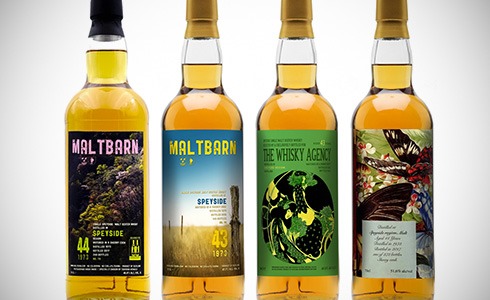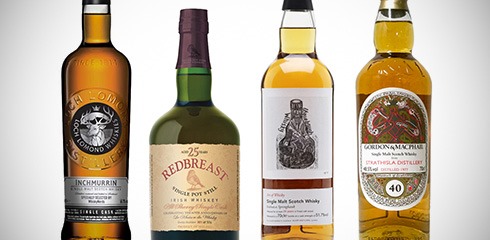
Best wishes for 2018
A quick look at some of the highlights of 2017 before we start a new year of (almost) daily whisky reviews.
Best new whiskies in 2017
We saw basically the same trends already mentioned in 2016: the excellent parcel of undisclosed Speyside 1970s whisky hasn’t dried up yet. On the other hand old Irish whiskey keeps amazing us.
For the undisclosed Speyside whisky, it seems this year it was mostly the 1973 vintage scooping the awards. My personal favourites:
- Speyside Region 44 yo 1973 (48,8%, Maltbarn for Shinanoya 2017, sherry cask, 249 btl.) as well as the Speyside Malt 43 yo 1973 (47,7%, Maltbarn 2016, sherry cask, 149 btl.)
- Speyside Region Malt 44 yo 1973 (51,6%, Antique Lions of Spirits ‘Butterflies’ 2017, sherry cask, 372 btl.)
- Speyside Region 1973 (46,9%, The Whisky Agency ‘Art Nouveau Ladies’ 2017, sherry butt)
In Irish whiskey I was amazed by the Redbreast 25 Years for LMdW (rather a 2016 release but I only tried it in January this year) and even more so the Redbreast 1985 ‘Dream Cask’, one that is not (yet) commercially available though.
In the bang for your buck category, one bottle wins hands down: the Inchmurrin 2003 ‘Law’ bottled for The Whiskynerds. I love that whisky and I don’t think I’ve had better quality for less than € 100. Although the Lagavulin 12 Years was also rather perfect this year.
A special mention for The Whisky Exchange who released a series of outstanding exclusive bottlings this year. The first that spring to mind are the Springbank 24 Years ‘Art of Whisky’, the Strathisla 1977 and the Irish single malt 1990.
Best old bottlings in 2017
Three top scorers this year when it comes to old bottlings, all with a huge reputation already:
This whisky blog
… is more or less status quo, even after a very strong 2016. That means 750.000 visitors in 2017 and over 2.5 million page views. Most months were up from last year, but the traditional downfall during the summer season has been bigger in 2017 as well – both trends cancel each other out.
Overall we’re seeing more traffic from the USA, China and Japan, while European countries are generally showing a slight downward trend (especially Sweden and Switzerland).

